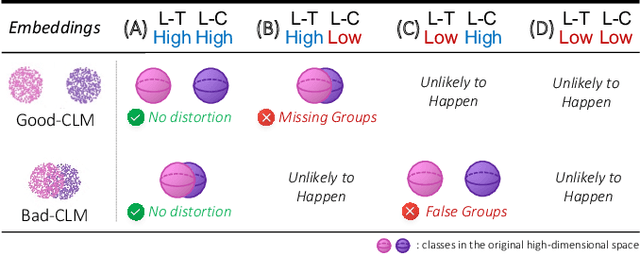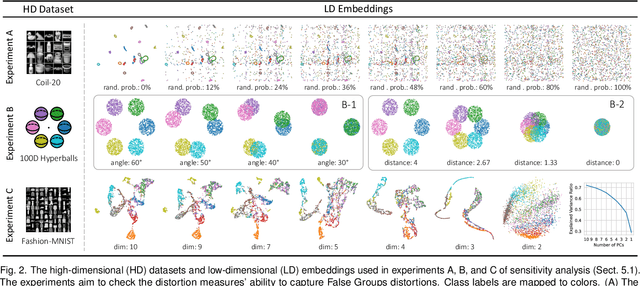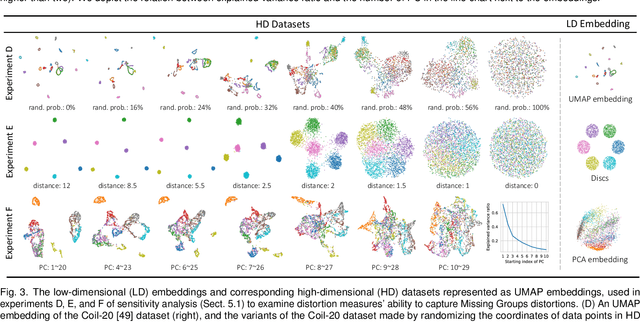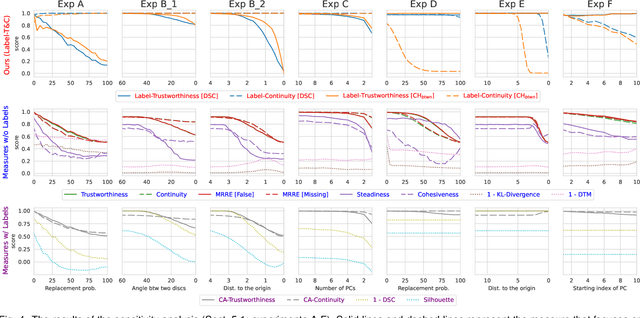Michaël Aupetit
Measuring the Validity of Clustering Validation Datasets
Mar 03, 2025Abstract:Clustering techniques are often validated using benchmark datasets where class labels are used as ground-truth clusters. However, depending on the datasets, class labels may not align with the actual data clusters, and such misalignment hampers accurate validation. Therefore, it is essential to evaluate and compare datasets regarding their cluster-label matching (CLM), i.e., how well their class labels match actual clusters. Internal validation measures (IVMs), like Silhouette, can compare CLM over different labeling of the same dataset, but are not designed to do so across different datasets. We thus introduce Adjusted IVMs as fast and reliable methods to evaluate and compare CLM across datasets. We establish four axioms that require validation measures to be independent of data properties not related to cluster structure (e.g., dimensionality, dataset size). Then, we develop standardized protocols to convert any IVM to satisfy these axioms, and use these protocols to adjust six widely used IVMs. Quantitative experiments (1) verify the necessity and effectiveness of our protocols and (2) show that adjusted IVMs outperform the competitors, including standard IVMs, in accurately evaluating CLM both within and across datasets. We also show that the datasets can be filtered or improved using our method to form more reliable benchmarks for clustering validation.
Classes are not Clusters: Improving Label-based Evaluation of Dimensionality Reduction
Aug 11, 2023



Abstract:A common way to evaluate the reliability of dimensionality reduction (DR) embeddings is to quantify how well labeled classes form compact, mutually separated clusters in the embeddings. This approach is based on the assumption that the classes stay as clear clusters in the original high-dimensional space. However, in reality, this assumption can be violated; a single class can be fragmented into multiple separated clusters, and multiple classes can be merged into a single cluster. We thus cannot always assure the credibility of the evaluation using class labels. In this paper, we introduce two novel quality measures -- Label-Trustworthiness and Label-Continuity (Label-T&C) -- advancing the process of DR evaluation based on class labels. Instead of assuming that classes are well-clustered in the original space, Label-T&C work by (1) estimating the extent to which classes form clusters in the original and embedded spaces and (2) evaluating the difference between the two. A quantitative evaluation showed that Label-T&C outperform widely used DR evaluation measures (e.g., Trustworthiness and Continuity, Kullback-Leibler divergence) in terms of the accuracy in assessing how well DR embeddings preserve the cluster structure, and are also scalable. Moreover, we present case studies demonstrating that Label-T&C can be successfully used for revealing the intrinsic characteristics of DR techniques and their hyperparameters.
 Add to Chrome
Add to Chrome Add to Firefox
Add to Firefox Add to Edge
Add to Edge